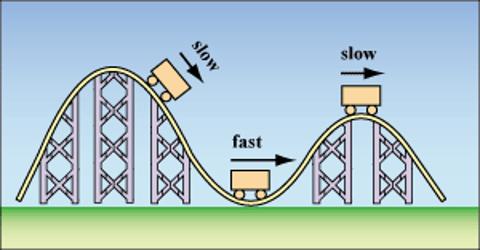 |
| https://goo.gl/sKJ2Hb |
SP4 - Analyzing and Interpreting Data:
This week I completed the acceleration lab activity. The goal of this experiment was to learn how to measure acceleration and further understand how it works. I achieved that by analyzing and interpreting the data recorded. In the experiment, I worked with two other people in order to track the acceleration of a toy car. We put it on an inclined surface. When that happened, I called out the intervals of time and for each second, the two other people that I worked with pointed to where the car was for each second. We repeated the process two more times, inclined the inclined surface and repeated the process again. By the end of the experiment, there was a total of 3 trials. From those trials, we were asked questions to reflect upon acceleration such as how to calculate and measure acceleration and were asked to graph it on.
No comments:
Post a Comment